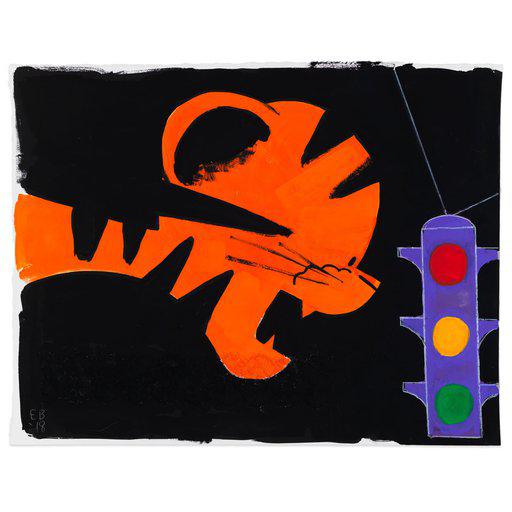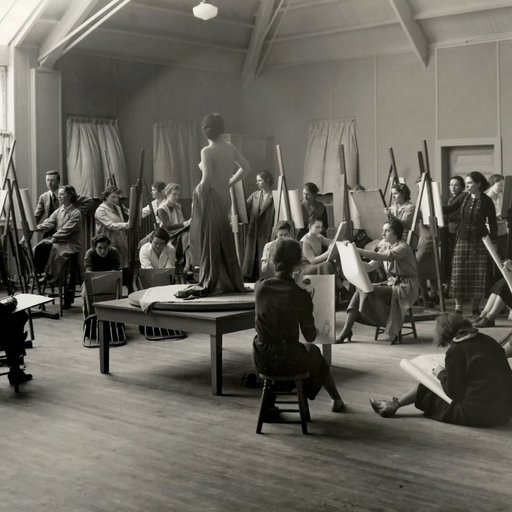Xu Bing
One of the most important contemporary Chinese artists working today, Xu Bing investigates the limitations and corruptibility of language by creating artworks that put words to absurd ends, sometimes fabricating nonsense languages that seem persuasive on first glance, other time bringing Chinese characters to inert life as sculpture. Employing traditional methods of printmaking and calligraphy to make everything from monumental installations to handcrafted books, Xu takes a skeptical view of written language's ability to convey authority, and even to reliably express meaning. Informed by both the strictures of the Cultural Revolution and the 20-year period he lived in America, Xu mischievously approaches this cultural divide in his art as well, suggesting that the differences may not be so great after all.
In his best-known work, Book From the Sky (1988), Xu constructed an installation featuring four scrolls of densely-written characters suspended over from the ceiling as a canopy over multiple novel-length books arranged on the floor—seemingly an epic literary undertaking, until one realizes that the writing is entirely unintelligible. In Book From the Ground (2007-ongoing), the artist achieved an inverse effect by creating a fully legible fictional story, written entirely with universally-understandable pictographs instead of words. In Square Word Calligraphy …
One of the most important contemporary Chinese artists working today, Xu Bing investigates the limitations and corruptibility of language by creating artworks that put words to absurd ends, sometimes fabricating nonsense languages that seem persuasive on first glance, other time bringing Chinese characters to inert life as sculpture. Employing traditional methods of printmaking and calligraphy to make everything from monumental installations to handcrafted books, Xu takes a skeptical view of written language's ability to convey authority, and even to reliably express meaning. Informed by both the strictures of the Cultural Revolution and the 20-year period he lived in America, Xu mischievously approaches this cultural divide in his art as well, suggesting that the differences may not be so great after all.
In his best-known work, Book From the Sky (1988), Xu constructed an installation featuring four scrolls of densely-written characters suspended over from the ceiling as a canopy over multiple novel-length books arranged on the floor—seemingly an epic literary undertaking, until one realizes that the writing is entirely unintelligible. In Book From the Ground (2007-ongoing), the artist achieved an inverse effect by creating a fully legible fictional story, written entirely with universally-understandable pictographs instead of words. In Square Word Calligraphy, then, Xu concocted a method of making English words appear to be Chinese characters, leading Western viewers to discover with surprise that they were able to read text that at first looked entirely foreign.
In 1999, Xu was awarded a MacArthur Foundation grant for his "originality, creativity, self-direction, and capacity to contribute importantly to society, particularly in printmaking and calligraphy," and in 2004 he received the first Artes Mundi award for the installation Where Does the Dust Collect Itself? In 2008 Xu was named vice president of the China Central Academy of Fine Arts, and in 2010 was honored with a Doctor of Humane Letters degree from Columbia University. Xu's art has been exhibited at the 45th and 51st Venice Biennale, as well as the Johannesburg and Sydney biennials. His work has been shown at numerous institutions including the Museum of Modern Art, the Hiroshima City Museum, and the Han Mo Art Center in Beijing.
BA, Central Academy of Fine Arts, Beijing, China, 1981
The National Art Museum of China, Beijing, China
The British Museum, London, England
The Museum of Contemporary Art, Los Angeles, CA
The Museum of Modern Art, New York, NY
The Kent and Vicki Logan Collection, San Francisco Museum of Modern Art, San Francisco, CA
Museum Ludwig, Köln, Germany
Art Gallery of New South Wales, Sydney, Australia
Queensland Art Gallery, Queensland, Australia
Fukuoka Asian Art Museum, Fukuoka, Japan
Princeton University Art Museum, Princeton, NJ
Eslite Gallery, Taipei, Taiwan






